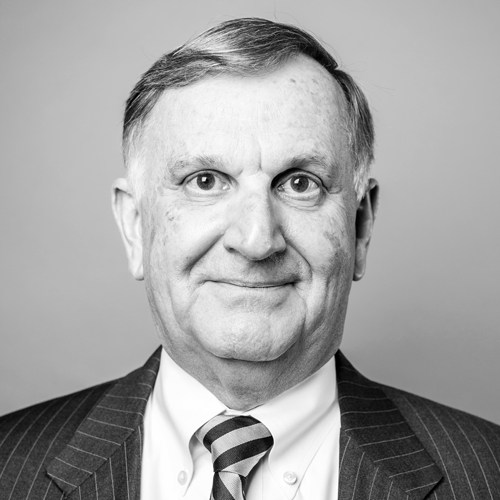Sandoz, the generic pharmaceuticals division of Novartis, is a driving force in the development of generic medications—which, by extension, makes healthcare more affordable. As a much less expensive alternative, generics enable more people to access life-changing drugs.
A company’s effort to introduce a new generic medication takes a concerted effort by scientists, business analysts, and attorneys. Indeed, a legal battle with the holder of a branded drug’s patent is practically guaranteed as a part of the process, and winning that battle is essential to the generic maker’s plan. In fact, few corporate legal teams have the opportunity to make such an impactful contribution as those staffed in the generic-drug industry.
Much of Sandoz’s success depends on “picking the right molecules to bring to market,” says Markus Hartmann, vice president and North American general counsel for the company.
“Part of our mission is to bring affordable care to as many people as possible.”
Among the crucial legal factors in determining whether a drug is a good candidate for a generic alternative are the expiration date of the patent, whether litigation is required, and any legal weaknesses that may be apparent in the patient.
While most corporate legal teams focus on protecting organizations from lawsuits and regulatory actions, Sandoz and other generic pharmaceutical companies maintain that lawyers are integral to the core business. “We’re not just a cost center; we’re also seen as a profit generator,” Hartmann says of his team.
This responsibility was a key motivator for Hartmann when he signed on with Sandoz in February 2015. “Part of our mission is to bring affordable care to as many people as possible while also being part of a larger-branded pharmaceutical company like Novartis,” he says.
Sandoz’s legal team has been instrumental in opening a new avenue for generic-drug manufacturers in the United States. The company won a precedent-setting case allowing it to bring to market the first generic biosimilar medication in the US. That product, Zarxio, is the generic version of the biologic Neupogen, a medication that increases white blood cells for chemotherapy patients.
Biosimilars are approved biologics that are highly similar to the reference product in terms of safety, efficacy (known as potency in the US), and quality (purity in the US). Biosimilars are not chemically identical to the reference product in the same way as generics, as biosimilars are produced by living organisms and not by chemical synthesis. However, biosimilars have been demonstrated to the satisfaction of the regulator to perform much like the reference product.
More complex than small-molecule medicines, biosimilars must go through a different approval pathway known as BPCIA, which includes analytical studies, pre-clinical testing, and clinical trials to establish and confirm biosimilarity in order to gain FDA approval. In 2006, the European Union began allowing companies to apply to bring biosimilars to market. As a global company based in Europe, Sandoz had a few years of navigating regulatory requirements pertaining to biosimilars in the EU under its belt before taking on the issue in the US.
The FDA approval of Zarxio in March 2015 followed Sandoz’s multi-year legal fight to establish a biosimilars pathway under the Biologics Price Competition and Innovation Act. “It was truly cutting-edge litigation,” Hartmann says.
Prior to Sandoz, Hartmann was the European and North American general counsel for Reckitt Benckiser, a UK-based consumer products company with well-known brands including Woolite, Calgon, and Clearasil. This position included three-years in Amsterdam—an experience he says was valuable to his current role. “I worked with a diverse team with members in Amsterdam, Frankfurt, Milan, Paris, Warsaw, London, and Parsippany, New Jersey,” he says. “It gave me exposure to working with a large, global legal team.”
Now reporting to Sandoz’s Germany-based general counsel, Hartmann collaborates on legal strategies with Sandoz colleagues around the world—and occasionally with counterparts within Novartis. In North America, Hartmann manages a staff of approximately fifty legal personnel involved with compliance, government affairs, licensing activity, intellectual property, and a legal team devoted to the biosimilars business.
As part of the company’s strategy, Sandoz’s IP lawyers must regularly consult with scientists to better understand patient issues, develop litigation strategies, and sync legal actions with new product development. “Regulatory affairs works hand-in-glove with us towards getting FDA approval—getting the right bioequivalent studies or clinical trials so we can get approval at same time we win litigation,” Hartmann says.
A generic manufacturer can challenge a patent according to numerous complex legal strategies. For example, if a branded drug is approved for multiple uses and the brand manufacturer has patents covering just a subset of those uses, a generic maker can attempt to gain approval for uses not covered by the patent. But forecasting the outcome of a drug patent case is tricky business, Hartmann acknowledges; “It’s more art than science to say who will win.”
Hartmann is regularly focused on coordinating the work of his legal team, who are involved with bringing dozens of drugs to market during any given week, and keeping them in sync with other departments. “I’m more of a field general than a captain,” he says.
His thirty years in the US Marine Corps Reserves helped prepare him for that role, as he assumed a number of leadership positions during the course of his military career—including deployments in the Middle East to support Operations Desert Shield/Storm and Enduring Freedom.
His current position may not present the daily life-and-death decisions of military combat, but the challenges are formidable, and the environment is certainly fast-paced. The work provides the opportunity to help more people get access to potentially life-saving medicines. It’s all Hartmann could ask for at this point in his career.

